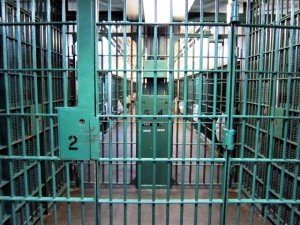California saved less money than anticipated from the implementation last year of Proposition 47, meaning less state funding for local groups to offer rehabilitative services to inmates kept out of prison under the measure, as well as other programs, state officials said.
The Los Angeles City Council last week joined local activists to dispute how state officials are calculating the savings, after Gov. Jerry Brown’s January budget proposal included $29.3 million of Proposition 47-related savings to be spent on preventative and rehabilitative services in the upcoming fiscal year.
Brown’s allocation, based on calculations by the Department of Finance, is much lower than the $100 million to $200 million the Legislative Analyst’s Office said would be saved.
Proposition 47 has reduced some non-violent felonies to misdemeanors, and the savings from locking up fewer inmates have been earmarked for services that either steer youth away from criminal activity or reduce the rate of individuals returning to prison. A portion of the funds was also allocated to services for crime victims.
The state had a year to calculate the amount of money that was saved, with the first pot of funding scheduled to be released in July and divvied up among local organizations and agencies that offer such services.
Despite the concerns of Los Angeles City Council members and local community groups, state officials said Proposition 47 led to less savings than initially thought.
The higher savings amount anticipated by the Legislative Analyst’s Office, which advises the state Legislature, is based on 4,700 fewer contract beds used in the first year, but Proposition 47 “only resulted in a reduction of about 400 contract beds,” according to Jeffrey Callison, a spokesman for the state Department of Corrections and Rehabilitation.
Not all of the 4,700 inmates kept out of prison beds last year were at contract facilities, according to Callison. Many are at the corrections department’s own facilities, where there are “limited possibilities for reduced expenditure due to the continuing need to keep prisons open,” he said.
Groups that contest the savings famount have begun a push to get Brown and state lawmakers to increase the funding proposal in the May revision of the budget and ultimately in June, when the spending plan is expected to be finalized.
Community Coalition, a nonprofit in South Los Angeles, is among those pressing local leaders to demand more state funding for the services, including the Los Angeles City Council, which backed a resolution earlier this week asking Brown to reconsider his funding plan.
The anticipated savings amount was based on the state Legislative Analyst’s Office’s projections when the ballot initiative was written, and also more recently when the office released an updated calculation in February, according to Karren Lane, vice president of policy for Community Coalition.
Lane said that Brown’s figure, based on calculations by the Department of Finance, fails to account for all of the savings from keeping fewer people in contract prisons.
She said that while some contract beds were freed up as the direct result of the inmates having their sentences reduced, others who were not affected by Proposition 47 were moved out of contract beds and into state facilities.
She said the next step is to ask the Los Angeles County Board of Supervisors to approve a resolution similar to the one adopted by the City Council.
“We’re encouraged our local leaders are stepping up to the plate to actually put pressure on the state to ensure that there’s enough resources in local neighborhoods and communities for prevention and treatment services,” Lane said.



